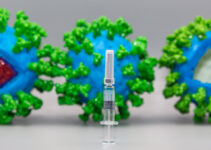How to prevent stroke? Eat any or all of the 253 nutritious and delicious foods listed in this article.
A regular perennial medical check up must be crucially inculcated in your creative activities, especially for ages 55 years old and above, exercise and a balanced, healthy diet.
Call the emergency hotline right away from any hospital nearest your place, or 911, when someone in your family had some of the vital symptoms of a stroke (which I will discuss below). This simply can help you immediately get your patient to the hospital for a lifesaving stroke medical care.
Whilst awaiting the emergency response team and or ambulance, you may implement the first aid for your patient at home. Have your patient bite on a crushed fresh 1 clove of garlic (peeled). The bigger the garlic is, the better.
2 Primary Kinds of Stroke
There are two primary kinds of stroke. I enumerate them below.
- Ischemic stroke is a mini stroke with blockage on the flow of the blood. It’s chiefly due to the lack of the blood flow that the person affected loses consciousness, among other symptoms due to the lack or inadequate supply of oxygen in the brain.
- Hemorrhagic stroke is a major stroke because of bleeding and causes unruly severe headache.
If the vital indicants last for more than an hour or two hours—it may unfortunately cause the brain to stop functioning. This is an emergency.
Stroke refers to the medical circumstance wherein unhealthy blood in the body unfortunately goes up to the brain, causing cell death. Hence, it’s perpetually vital to take good care of your health, exercise 3-4x a day for 35 minutes to an hour, water therapy, and closely watch your diet.
20 Vital Indicants of Silent Stroke
The following are vital indicants of silent stroke to watch out for those who are prone to be affected.
- Switched or destabilized breathing and heart rate. There’s an enormous leap from regular normal passing of oxygen into and releasing carbon dioxide out of the lungs. Periodic breathing of the body process of inhale and exhale.
- Memory deficit involves the temporal lobe, which is a part of a larger bodily organ. That part of the cerebral cortex in either hemisphere of the brain lying inside the head. Relating to the cerebrum or the brain.
- Numbness which is a symptom of nerve damage or dysfunction. It may be partial or total lack of sensation in a part of the body, depending on the severity of the stroke.
- Fatigue or tiredness. You easily exhaust yourself or get tired through overwork and great stress and strain. Over boredom, resulting from overexposure with one’s work.
- Incapacity to mobilize, move on or move around, and feel or sense on one side of the body. It’s like you’re on a standstill with your body reflex frozen in half.
- Dizziness with a feeling that you are about to fall or sway and even vomiting of the reflex act ejecting contents of the stomach through the mouth.
- Decreased reflexes in gag, swallow, and reaction to light. Struggling for breath due to having an insufficient of the oxygen intake.
- Problem in vocalization or speaking, abnormal speech production with a bit of growing pains and difficulty in understanding.
- Disorganized logical thinking, thought process and lacking order, resulting in confusion with the cognitive state of mind.
- Can’t respond with a lift or raise both hands and arms together. One arm will aimlessly drift downwards.
- Headache. A cluster of pain in the head caused by dilation of cerebral arteries or muscle contractions.
- Hiccups being the state of having reflex spasms of the diaphragm, thus producing an audible sound.
- Loss of stream of consciousness in which you are unaware of yourself and your current situation.
- Hemiplegia, weakness of the muscle or muscular tissue, and pain in the face.
- Inability and lacking the power to perform to turn one’s head to one side.
- Incapacity to stick out tongue or unfitness to move it from side to side.
- Balance problem. Impairment of or difficulty in moving and walking.
- Loss of vision to one side (unilateral) with a blurry mental image.
- Disharmony in senses of smell, taste, hearing or vision.
- Drooping of eyelid, hanging down as from exhaustion.
Silent stroke begins suddenly, lasting from a few seconds to minutes. This will be closely followed, or the onsets are closely timed by the silent stroke.
10 Risk Factors That Can Lead to Silent Stroke
The following are the 11 risk factors that can lead to a silent stroke:
- Excessive consumption of processed foods and drinks e.g. red meat, canned goods, instant foods, instant noodles, coffee, sodas, liquor etc. Increases the risks of stroke by 48%.
- Excessive consumption of salty foods and saturated fats increases the risks of stroke.
- Lack of physical activity is more likely to get very sick.
- End stage of kidney disease.
- Malnutrition and obesity.
- High blood pressure.
- Tobacco smoking.
- High cholesterol.
- Unhealthy diet.
- Diabetes.
- Smoking.
At the hospital, all patients’ medical history will be required, all related sickness, food, diet and the time the silent stroke strikes.
A series of brain scan will be implemented—CT scan or MRI scan, ECG or blood test; the neurologists and other related medical specialists will check the patient to accurately diagnose the condition. These procedures entail a significant cost that can significantly affect one’s finances.
Five (5) Stroke Rehabilitation Procedures for Severe Stroke
The aftermath of a severe stroke requires considerable time to bring back the patient to normal functioning. The following remedies can bring back someone afflicted to regain independence.
- Speech Therapy. Speech therapy can assist patients with difficulty in uttering of words and understanding them.
- Physical Therapy. This therapy provides patients with special exercises to regain bodily movement, and the coordination skills that were lost when a silent stroke struck.
- Occupational Therapy. This therapy focuses on enhancing the patient’s daily routine and activities like eating, drinking, bathing, reading, writing.
- Support Group Therapy. The immediate family helps relieve fear and angst after stroke. If you are affected by a silent stroke, let your family know how you feel and what they can do to help you.
- Pray Therapy. Pray unceasingly. There is power in prayer. Ask for a christian church pastor to pray for you and enjoy the healing wonders of faith in God and God’s love for you. (James 5: 14 Is any sick among you? Let him call for the elders of the church; and let them pray over him, anointing him with oil in the LORD’s name.)
If you are an office worker, working on your laptop and computers for long hours can stress your eyes and worsen your condition. Hence, you may rest your eyes for 15 minutes. Keep blinking your eyes many times to keep the eyes wet. It’s ultimately advisable to used a right light wattage at home or at the office, and get an eight (8) hours sleep.
The level of dynamic activities gradually declines with age so its of utmost significance to have a healthy diet. You will need a lot of Vitamin B1, Vitamin C, Vitamin D, vitamin E, zinc, lutein, calcium, folic acid, omega-3, and beta carotene. A regular garlic consumption reduces the possibility of a stroke 85%, along with fresh veggies.
How to Prevent Stroke the Natural Way

You can prevent stroke by regularly taking in foods rich in essential vitamins, minerals, and nutrient-rich foods, which I enumerate in the next section.
The Top 20 Foods Rich in Vitamin B1 (Thiamin)
- Cooked corn meal (grits)
- Whole wheat bread
- Sunflower seeds
- Black-eyed peas
- Acorn squash
- Catfish fillet
- Fish salmon
- Black beans
- Green peas
- Brown rice
- Asparagus
- Tuna fillet
- Trout fillet
- Flax seeds
- Pistachios
- Oatmeal
- Soymilk
- Quinoa
- Lentils
- Tofu
34 Foods Rich in Vitamin C
- Cherries, blackberries, strawberries, loganberries, cranberries, blueberries, elderberries, raspberries, mulberries. Gooseberries and all other berries family.
- Au Kakadu plums or Java plum
- Black currants (European)
- Sweet yellow peppers
- Green Amalaki fruit
- Mamey sapote fruit
- Mustard spinach
- Pink grapefruit
- Pomegranates
- Chili peppers
- Sugar Apple
- Cantaloupe
- Cauliflower
- Pineapple
- Tangerine
- Malungay
- Mangoes
- Kiwi fruit
- Broccoli
- Papayas
- Oranges
- Bananas
- Parsley
- Thyme
- Saffron
- Pomelo
- Guavas
- Apricot
- Lychee
- Lemon
- Grapes
- Apple
- Pears
- Kale
Top 55 Foods Rich in Vitamin D
Fortified Cereals/Tofu
- Oatmeals
- Tofu
Fish/Fish Oil
- Cod liver oil and shark liver oil
- Smoked white fish
- Atlantic cod fish
- Atlantic herring
- Atlantic salmon
- Rainbow trout
- Fresh sardines
- Haddock fish
- Sturgeon fish
- Halibut fillet
- Tilapia fillet
- Swordfish
- Mackerel
- Salmon
- Tuna
Meat
- Roasted pork ribs
- Pork lean ham
- Goose meat
- Beef liver
Dairy product
- Cheddar cheese
- Fontina cheese
- Ricotta cheese
- Swiss cheese
- Goat cheese
- Yogurt
Milk
- Plant-based milk like soy milk, oat milk, almond milk, coconut milk, and hemp milk
- Low fat and skim milk
- Whole milk
- Cow’s milk
- Buttermilk
- Kefir plain
- Rice milk
- Milk
Vegetables
- Sweet potato
- Pumpkin
- Potatoes
- Spinach
Fruits
- Red & white currants
- Carambula starfruit
- Blackberries
- Raspberries
- Cranberries
- Blueberries
- Pineapple
- Breadfruit
- Avocados
- Apricots
- Bananas
- Cherries
- Oranges
- Apple
- Dates
- Figs
Top 21 Food Rich in Vitamin E
- Mamey sapote fruit
- Cantaloupe melon
- Red sweet pepper
- Sunflower seeds
- Wheat germ oil
- Mustard greens
- Boysenberries
- Pomegranates
- Turnip greens
- Black currants
- Loganberries
- Gooseberries
- Blackberries
- Sunflower oil
- Raspberries
- Cranberries
- Strawberry
- Blueberries
- Mulberries
- Cherimoya
- Tangerine
- Asparagus
- Breadfruit
- Avocados
- Bananas
- Mangoes
- Apricots
- Papayas
- Kiwi fruit
- Jackfruit
- Spinach
- Cherries
- Peaches
- Guavas
- Apples
- Olives
- Pears
42 Foods Rich in Zinc
- Cheese made from cow’s milk
- Kefir plain and yogurt
- Tempeh soy products
- Firm tofu. Natto tofu.
- Mozarella cheese
- Garbanzos beans
- Green soy beans
- Grass fed beef
- Ricotta cheese
- Sesame seeds
- Red currants
- Blackcurrants
- Pomegranate
- Sweet potato
- Cantaloupes
- Strawberries
- Hemp seeds
- Blackberries
- Raspberries
- Blueberries
- Brown rice
- Asparagus
- Flax seeds
- Beef liver
- Kiwi fruit
- Oatmeal
- Potatoes
- Avocado
- Apricots
- Spinach
- Peaches
- Salmon
- Broccoli
- Lobster
- Guavas
- Banana
- Lentils
- Turkey
- Dates
- Garlic
- Lamb
- Kale
15 Foods Rich in Folic Acid
- Fortified grains, e.g. bread and pasta. Fortified rice.
- Legumes- fruits or seeds. Beans, peas, lentils.
- Wheat. Wheat kernel.
- Black-eyed peas
- Leafy greens
- Citrus fruits
- Asparagus
- Beef Liver
- Avocados
- Spinach
- Romaine
- Broccoli
- Papayas
- Bananas
- Beets
12 Foods Rich in Lutein
- Arugula green leaf
- Yellow sweet corn
- Sweet potatoes
- Winter squash
- Swiss chard
- Green Peas
- Asparagus
- Broccoli
- Collards
- Spinach
- Carrots
- Kale
17 Foods Rich in Calcium
- Fortified foods. Grain-based foods like breakfast cereals. Some bread and tortillas are fortified with calcium.
- Seeds: Chia seeds, sesame seeds, celery seeds, poppy seeds.
- Parmesan cheese. Softer cheese has less calcium content.
- Leafy greens: collard greens, spinach, kale
- Amaranth seeds and leaves
- Fresh sardines and salmon
- Kefir plain and yogurt
- Whey protein powder
- Edamame and tofu
- Fortified soy milk
- Beans and lentils
- Ricotta cheese
- Goat’s milk
- Cow’s milk
- Rhubarb
- Milk
- Figs
24 Foods Rich in Omega-3
- Natto soy beans and soybeans
- Fontina cheese
- Grass fed beef
- Winter squash
- Fresh sardines
- Wild salmon
- Anchovies
- Mackerel
- Herring
- Tuna
- Flax seed oil
- Chia seeds
- Flax seeds
- Wild rice
- Firm tofu
- Canola oil
- Olive oil
- Mangoes
- Avocados
- Blueberry
- Spinach
- Broccoli
- Caviar
- Lamb
13 Foods Rich in Beta Carotene
- Assorted: Apricot fruit, Acerola or Barbados cherry, passion fruit, kale, tomato (red or green), sweet potato (violet or yellow), bell pepper.
- Yellow-orange fruits: pineapple, tangerine, oranges, mash melon or cantaloupe, papayas
- Red veggies: tomato, watermelon, bell pepper
- White foods: onion, apple, pears, guavas
- Orange foods: mango, carrots, pumpkin
- Dark green veggies: broccoli, spinach
- Dark red roots: beet
5 Recommendations
- Having plants in your garden and in the balcony like lavender, aloe vera, snake plants and daisies perpetually helps you to relax, have positive vibes and have a better sleep. You can likewise have it as indoor plants in your living room occasionally, which is good for your heart’s well-being.
- Have black cumin (Nigella sativa) in your diet for protection of the guts or as a remedy against ulcer, constipation, indigestion, bloating, intestinal damage. It is also an antifungal, antivirus, anti-diabetic, prevents allergies, reduces blood sugar spikes, protects against heart disease, stroke, kidney concerns, etc.
- To cleanse blood of free radicals from harmful sodas, canned goods and preserved foods—it is best for the patient to have a ginger tea with a clove of garlic. Boil 1cup of water, a clove of fresh garlic (minced), 1/2 tsp of fresh ginger and 1/2 fresh lemon once a day for 2weeks or until the patient is well. Drink after breakfast.
- Have a healthy vegan salad (specially with raw herbs ginger, garlic, onion, basil, thyme, parsley, celery, red bell pepper, chili pepper, lemon grass and rosemary), veggies and fresh fruits for breakfast, lunch and dinner every day.
- Undertake overall lifestyle change. The best way to avoid stroke is by enhancing your daily diet with plant-based diet fresh fruits and veggies which you can even grow in your garden, and exercise. Avoid pork/chicken/beef meats, preserved foods, saturated fats and salty foods. Have an optimal sleep for 7-8 hours per day. Armor yourself with prayers and optimism. Have a sunny outlook in life to prevent strokes or heart attack. Smile or laugh often, listen to the uplifting songs of Don Moen and read motivational books every day. Last, enhance your sunny sunshine exposure, which is still one of the best vitamin D one can get.
Helpful Bible Verses on Health and Healing
The following are helpful bible verses that can help you get well and achieve optimal health:
And on the banks, on both sides of the river, there will grow all kinds of trees for food. Their leaves will not wither, nor their fruit every month, because the water for them flows from the sanctuary. Their fruit will be for food, and their leaves for medicine.
Ezekiel 47:12
Is any among you afflicted? Let him pray. Is any merry? Let him sing psalms.
James 5:13
Casting all your care upon Him; for He careth for you.
1 Peter 5:7
Pray without ceasing.
1 Thessalonians 5:17
Have a Big Faith
In a Big God!
Prayer is the Best Medicine.
And God is the Best Doctor ever.
References
Collins, C. (2007, January). Said another way: stroke, evolution, and the rainforests: an ancient approach to modern health care. In Nursing Forum (Vol. 42, No. 1, pp. 39-44). Malden, USA: Blackwell Publishing Inc.
Gorelick, P. B. (1995). Stroke prevention. Archives of Neurology, 52(4), 347-355.
Liu, L., Wang, D., Wong, K. L., & Wang, Y. (2011). Stroke and stroke care in China: huge burden, significant workload, and a national priority. Stroke, 42(12), 3651-3654.
Salanti, G., Ades, A. E., & Ioannidis, J. P. (2011). Graphical methods and numerical summaries for presenting results from multiple-treatment meta-analysis: an overview and tutorial. Journal of clinical epidemiology, 64(2), 163-171.
Staughton, J. (2020). 11 Incredible Benefits of Black Cumin Seed Oil | Organic Facts. Retrieved 18 July 2022, from https://www.organicfacts.net/health-benefits/oils/black-cumin-seed-oil.html
[cite]



